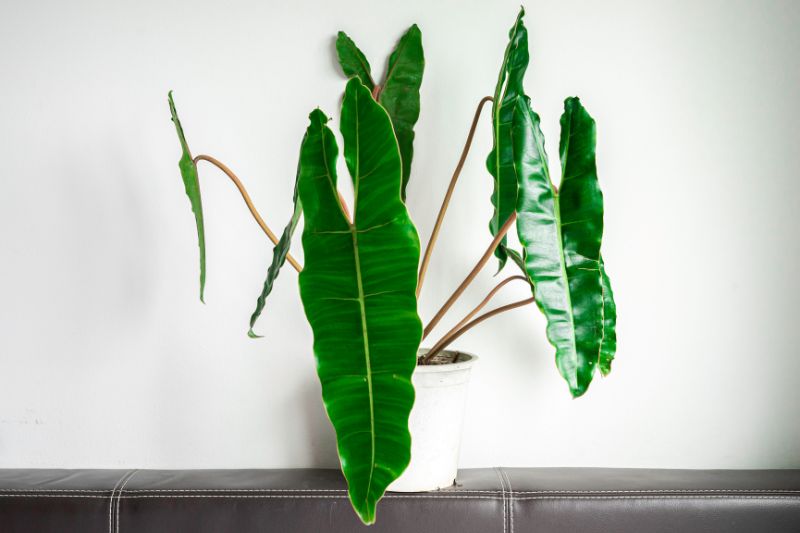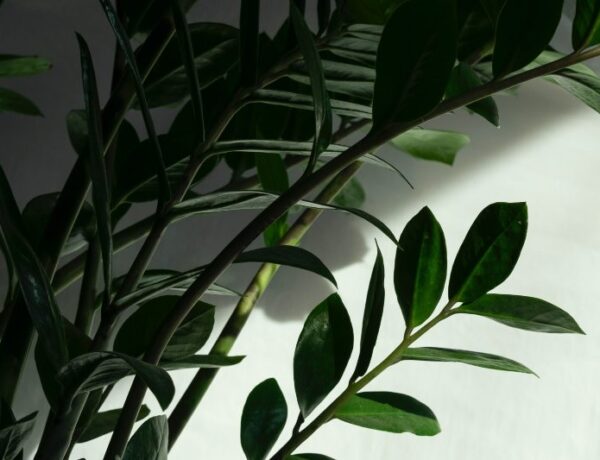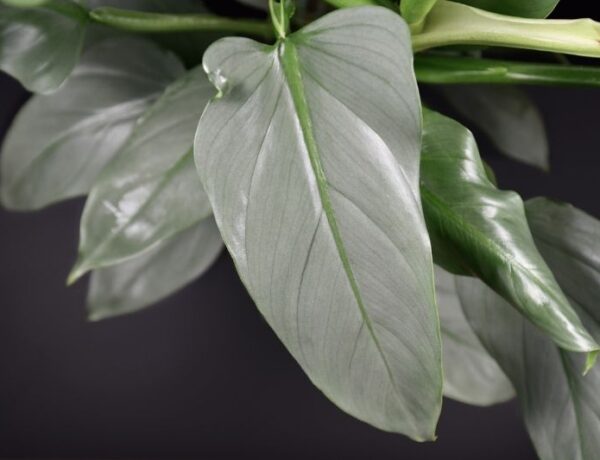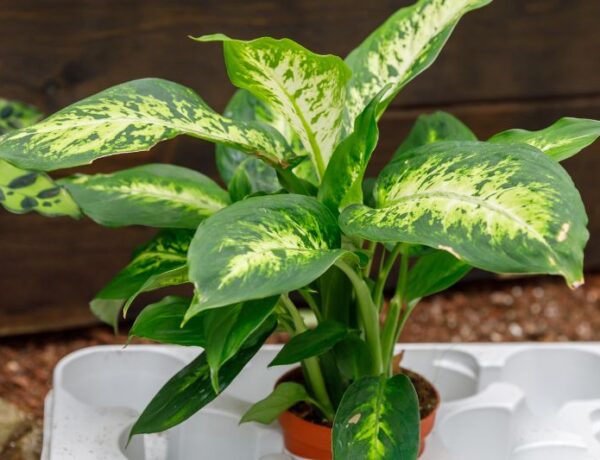If you’re a fan of tropical houseplants, Philodendron billietiae will undoubtedly catch your eye. This captivating plant, known for its unique elongated, spade-shaped leaves, is a lovely addition to your indoor jungle.
Originating from the lush rainforests of South America, this evergreen perennial brings a splash of the tropics right into your living room. And the best part? It’s not as demanding as it might look! All it asks for is a balance of bright, indirect light, moist but well-draining soil, and warm, humid conditions.
Table of Contents
1. General Information & Taxonomy
| Scientific name: | Philodendron billietiae |
| Common names: | Emerald Vine Philodendron, Billie and Philidor, Billie (Named after Freda Billiet, the one that discovered this species) |
| Native to: | South America |
| Toxicity: | Toxic to pets (cats and dogs) |
| Mature size: | The size of the plant varies, but in ideal conditions, it can grow up to 3 feet long. |
| Category: | Tropical houseplant, Vine |
| Growth Rate: | Moderate to fast, depending on care conditions |
| Dormancy Period: | Fall and winter |
| Hardiness: | USDA Hardiness Zones 9 to 11 |

2. Philodendron Billietiae Care & Growing Requirements
Now, let’s delve into what this gorgeous philodendron variety needs to thrive.
» Watering
One of the secrets of a thriving Philodendron Billie is balance in watering. It loves consistent moisture but despises soggy soil. Allow the top one to two inches of soil to dry out between waterings. Then, water it thoroughly until it drains out the bottom. Remember, love doesn’t mean drenching your plant in water!
» Light
Billie appreciates bright, indirect light, just like what it gets in its native rainforest home. It can take a little direct morning or evening sun, but harsh midday sun can scorch those fabulous leaves.
» Soil
Your Billietiae Philodendron isn’t too picky about its soil, as long as it’s well-draining and stays moist without becoming waterlogged. A mix of indoor potting soil, perlite, and orchid bark or vermiculite will keep it happy.
» Temperature
Remember, this is a tropical plant, so think warm and cozy temperatures. It thrives at 65 to 80 degrees Fahrenheit (18 to 27 degrees Celsius). Avoid cold drafts and chilly windows that could make your plant uncomfortable.
» Humidity
With humidity levels, you want to mimic a rainforest environment, between 60% to 80% humidity. Consider using a humidifier or keeping it in a greenhouse environment.
» Fertilizer
In the spring and summer, feed your plant a balanced, half-strength fertilizer once a month. But don’t forget to pause during fall and winter to avoid fertilizer burn.
3. Philodendron Billietiae Maintenance and Propagation
» Repotting
When your Philodendron Billie starts outgrowing its pot (which it’ll typically do every one to two years), it’s time to move it to a new home. Spring or summer is the best time for this since the plant is in its active growing phase.
» Pruning
Pruning is more about maintaining the shape of your plant and removing any unhealthy leaves. Always use clean, sharp tools.
» Propagation
Want more Philodendron billietiae? No problem! Propagate through stem cuttings with at least two nodes. You can root them in water or sphagnum moss before transferring them back to soil.
4. Common issues
» Leaves Turning Yellow
Overwatering is often the culprit behind yellowing leaves. If you find the leaves yellowing and the soil constantly wet, it’s time to reassess your watering habits.
» Leaves Turning Brown
While Philodendron billietiae loves basking in bright, indirect light, exposure to harsh, direct sunlight can cause leaf burn, resulting in brown spots.
Additionally, insufficient humidity can also lead to browning leaf tips. Make sure you’re keeping the plant in ideal light conditions and maintaining the right humidity levels.
» Droopy Leaves
If your plant’s leaves seem less perky than usual, it could be a sign of underwatering or low temperature. Check if the soil is dry, and remember this tropical native isn’t a fan of chilly temperatures.
» Stunted Growth
If your Philodendron billietiae is not growing as it should, it might be due to insufficient light or inadequate fertilizing. Remember, bright, indirect light and a balanced fertilizer are key to its growth.
» Leggy Stems
Leggy stems are usually cause by insufficient light. Adjust the plant’s location so that it gets adequate light.
5. Philodendron Billietiae Diseases & Pests
Just like any plant, Philodendron billietiae can encounter certain diseases and pests. Some of the most common diseases include root rot, leaf spot, and blight.
- Root rot: This is usually a consequence of overwatering, causing the roots to become waterlogged and start decaying. Signs include yellowing leaves, wilting, and stunted growth. Proper watering practices and well-draining soil can prevent root rot.
- Leaf spot: This disease manifests as dark, water-soaked spots on the leaves, often surrounded by a yellow halo. It’s usually caused by a fungal or bacterial infection. Affected leaves should be removed, and fungicides may be needed.
- Blight: Blight can lead to the wilting, browning, and dying of plant parts. The solution is usually to remove the affected areas and avoid wetting the foliage when watering.
As for pests, it’s crucial to maintain a clean environment and check your plant regularly. Insects such as spider mites, scale, fungus gnats, and thrips might be attracted to your Philodendron billietiae. If you notice your plant is under attack, using an insecticidal soap or a suitable pesticide can help control the problem.
6. Conclusion
In the world of indoor plants, Philodendron billietiae is a unique and appealing addition. Caring for it can be a rewarding endeavor when you see those fantastic leaves unfurl.
Keep in mind that this tropical gem is just one of the many fantastic Philodendron types available, each with its own unique attributes and care needs. Whether you’re a newbie plant parent or a seasoned gardener, the Philodendron family has something for everyone. So, don’t stop at just one; explore the verdant world of Philodendron types and see how wonderfully they can transform your space.






No Comments